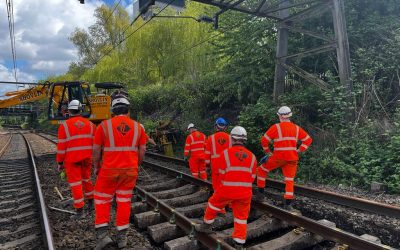Common Railway Safety Myths Debunked
The railway industry, with its rich history and vast network, has been the subject of numerous myths and misconceptions over the years. Many of these myths pertain to safety, and while some may seem harmless, they can have serious implications if believed and acted upon. In this article, we’ll debunk some of the most common railway safety myths and set the record straight.
Myth 1: Trains Always Run on Schedule
Debunked: While railway operators strive to maintain punctuality, various factors can cause delays. These include adverse weather conditions, technical issues, or unforeseen incidents on the tracks. Believing that trains always run on schedule can lead to risky behaviors, such as rushing to cross tracks before a train arrives. It’s always safer to wait and ensure the track is clear.
Myth 2: It’s Easy to Hear an Approaching Train
Debunked: Modern trains, especially electric ones, are much quieter than their older counterparts. Relying solely on hearing can be deceptive, as factors like wind direction, ambient noise, or distractions can mask the sound of an approaching train. Always look both ways and obey crossing signals.
Myth 3: Train Tracks are Public Property
Debunked: This is a dangerous misconception. Train tracks are private property, and trespassing on them is not only illegal but also extremely hazardous. Trains can come from any direction at any time, and being on the tracks puts lives at risk.
Myth 4: Trains Can Stop Quickly if Something is on the Tracks
Debunked: Trains, due to their massive weight and momentum, require a significant distance to come to a complete stop, even if the emergency brakes are applied. By the time a train driver sees an obstacle, it’s often too late to stop in time. It’s crucial to stay off the tracks and always be cautious at crossings.
Myth 5: Only the Front of the Train is Dangerous
Debunked: Every part of a moving train poses risks. Getting too close to any part of a train, whether it’s the front, sides, or back, can result in serious injuries. It’s essential to maintain a safe distance from all parts of a train, whether it’s stationary or moving.
Myth 6: Railway Crossings Without Gates are Less Busy
Debunked: The presence or absence of gates at a railway crossing doesn’t indicate the frequency of train traffic. Some busy tracks might not have gates due to logistical reasons. Always treat every crossing as a potential hazard and follow safety protocols.
Myth 7: It’s Safe to Cross Immediately After a Train Passes
Debunked: Just because one train has passed doesn’t mean another isn’t right behind it, especially on tracks with multiple lines. Always wait, look both ways, and ensure no other trains are approaching before crossing.
Myth 8: Walking Along Train Tracks is Safe as Long as You Step Aside for Trains
Debunked: Walking along train tracks is never safe. Not only is it trespassing, but there’s also the risk of tripping, coming into contact with the electrified third rail, or being caught off guard by a quiet, fast-moving train.
Conclusion:
Railway safety is a shared responsibility. While railway operators and authorities implement safety measures and protocols, it’s up to the public to be informed, aware, and cautious.
By debunking these common myths, we hope to promote a better understanding of railway safety and reduce the risks associated with misconceptions.
Remember, when it comes to railway safety, it’s always better to be safe than sorry.




